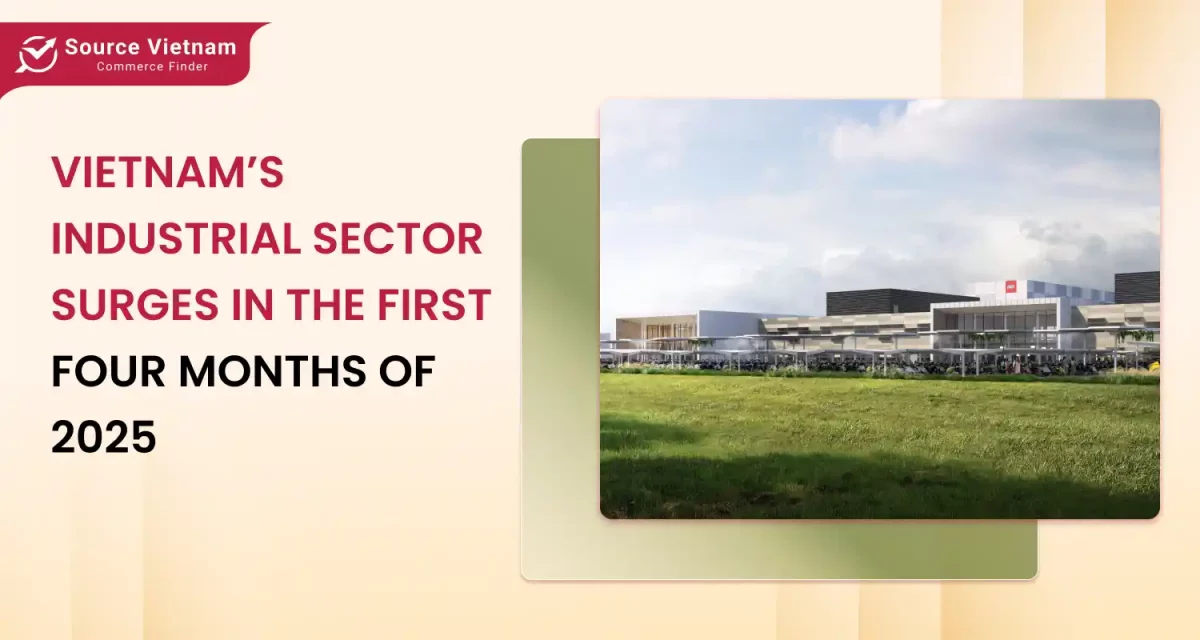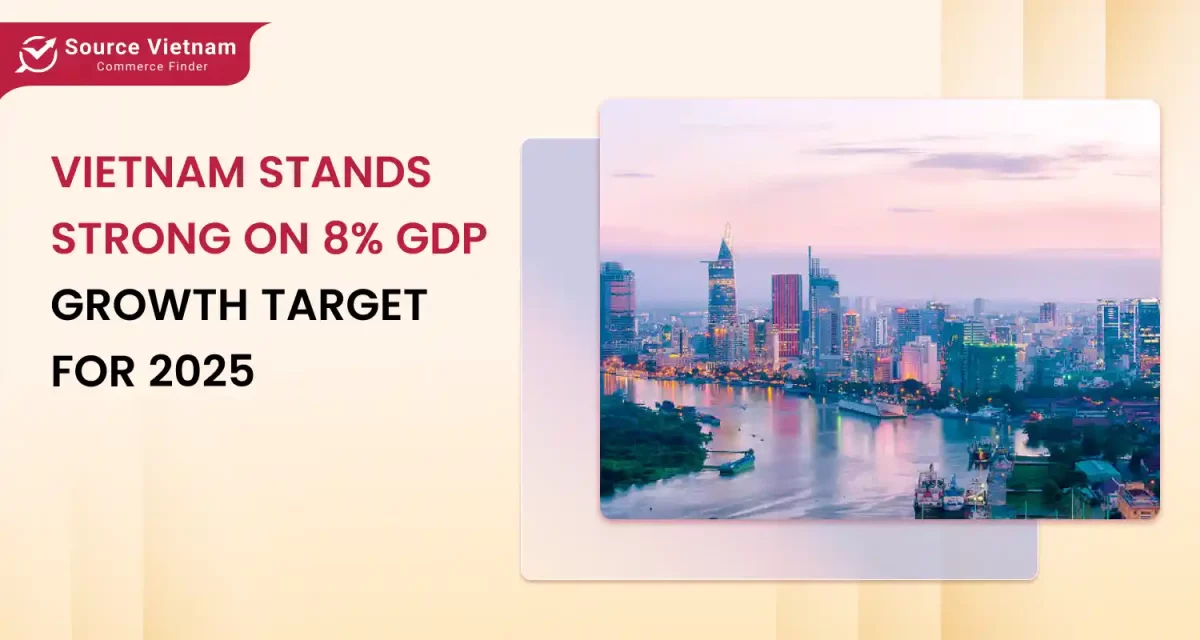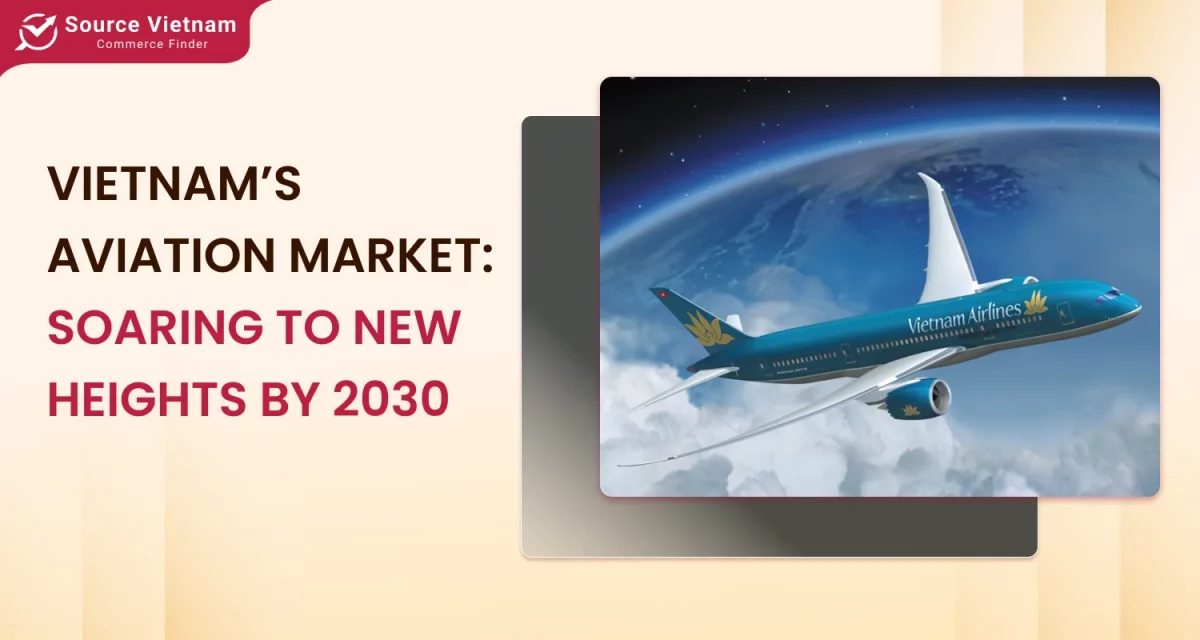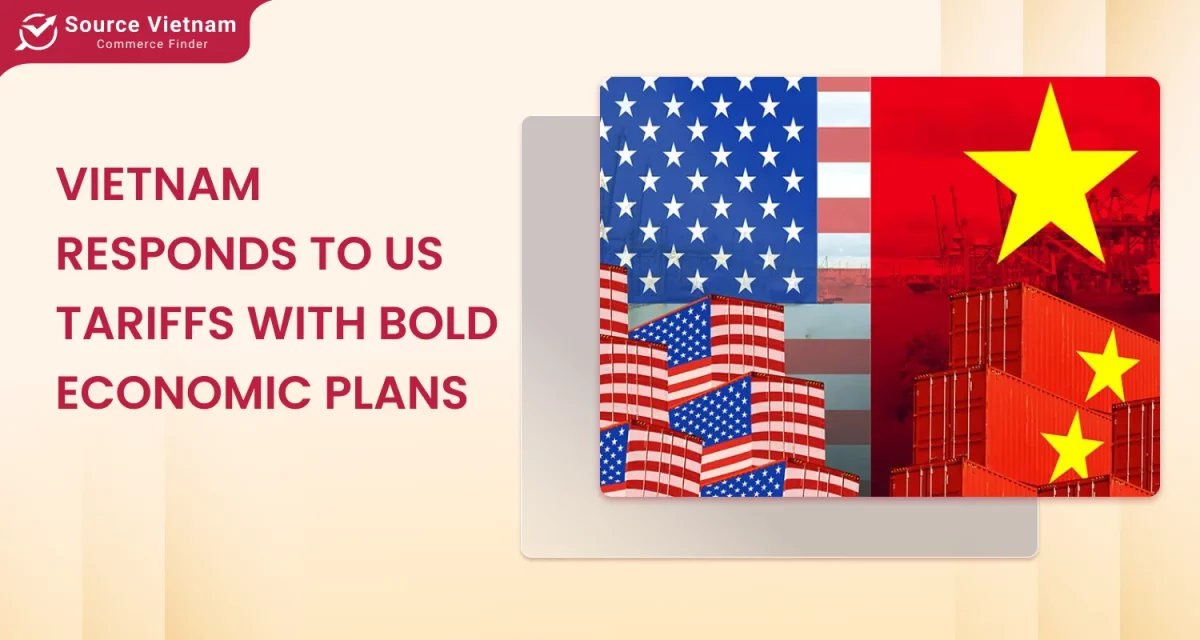Strategically, from an elementary utility it has graduated into fuel for the economy, the worldwide luggage market. It is now valued at billions of USD every year for its constant growth-it drives innovativeness, employment, and business expansion globally.
We will offer insights about the key trends and segments as well as growth estimation for the luggage market from 2024 to 2029.
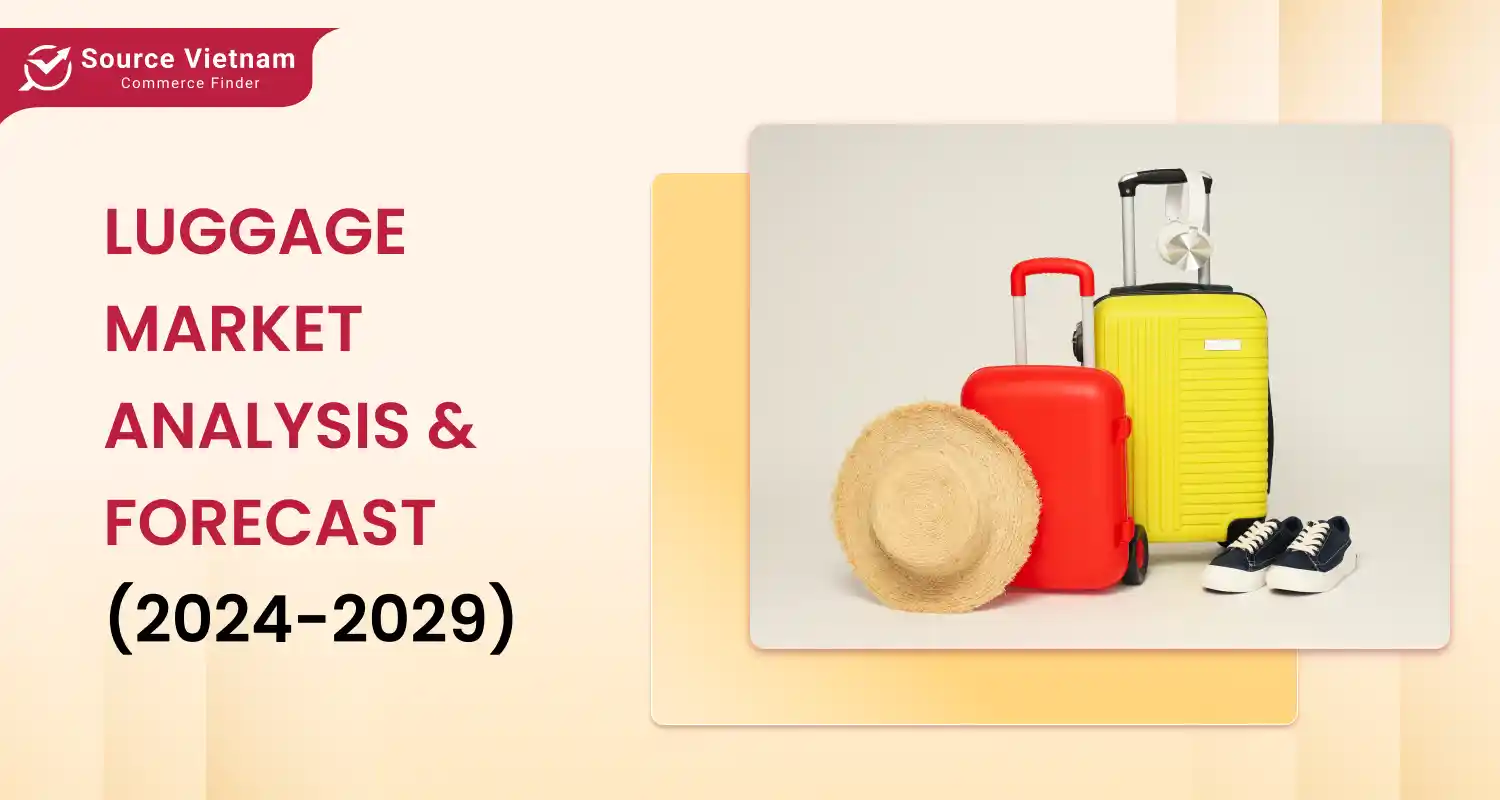
Overview of the Global Luggage Market
Before diving into the specifics, it’s important to understand the current landscape of the luggage market, including its challenges and opportunities.
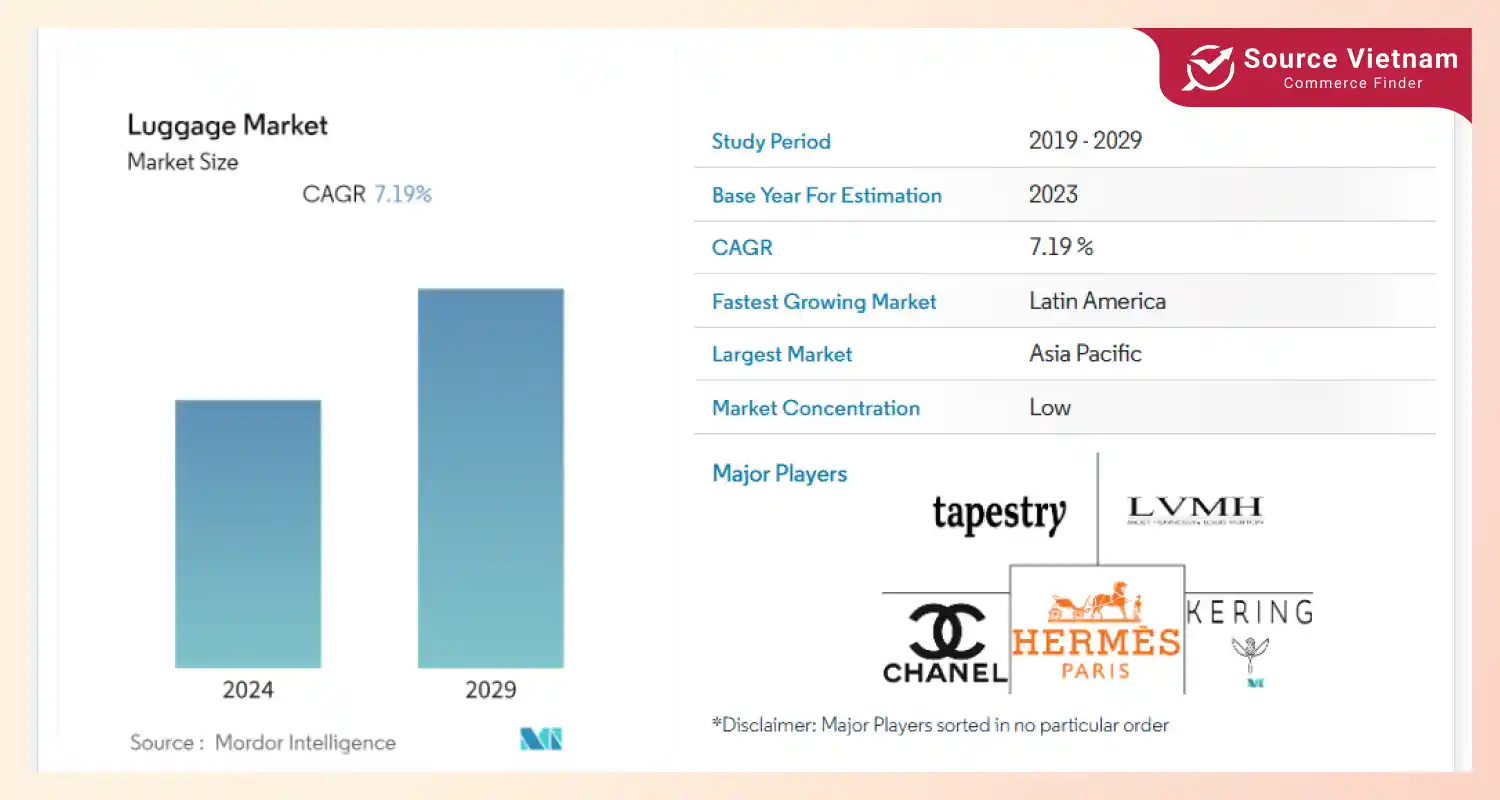
Product segmentation
There are two important vertical segments in which the luggage industry has the most promising growth opportunities:
- Travel luggage: It covers everything, from bags, travelling bags to travel duffel bags. Demand will be driven by the booming business and tourism industry. The segment is projected to grow at a CAGR of 5.2% during the period from 2023 to 2029.
- Casual and business Bags: It includes a backpack, laptop bag, and briefcase. Urbanization increases as more people work remotely, which has played a significant role in the growing demand. The CAGR from 2024 to 2029 is forecast at 4.8%.
Read more >>> Top 10 ODM and OEM luggage Vietnam manufacturer
Regional market insights
The luggage market holds a pivotal position in global economic regions, with diverse patterns and emerging trends:
| Region | Market segment | 2024 size | CAGR growth | 2029 size | Key companies |
| North America | Smart Luggage | $1.24 billion | 7.10% | $1.74 billion | Samsonite International, Away, Tumi |
| Europe | Eco-friendly Luggage | $2.87 billion | 5.60% | $3.77 billion | Samsonite, Delsey, Rimowa |
| Asia-Pacific | Travel and Business Bags | $4.32 billion | 6.40% | $6.19 billion | VIP Industries, Safari Industries |
| Middle East & Africa | High-end Travel Gear | $789 million | 8.20% | $1.25 billion | Samsonite, American Tourister |
Emerging trends in the luggage market
The luggage industry is experiencing a lot of changes lately owing to the changes in consumer trends and emerging new technologies.
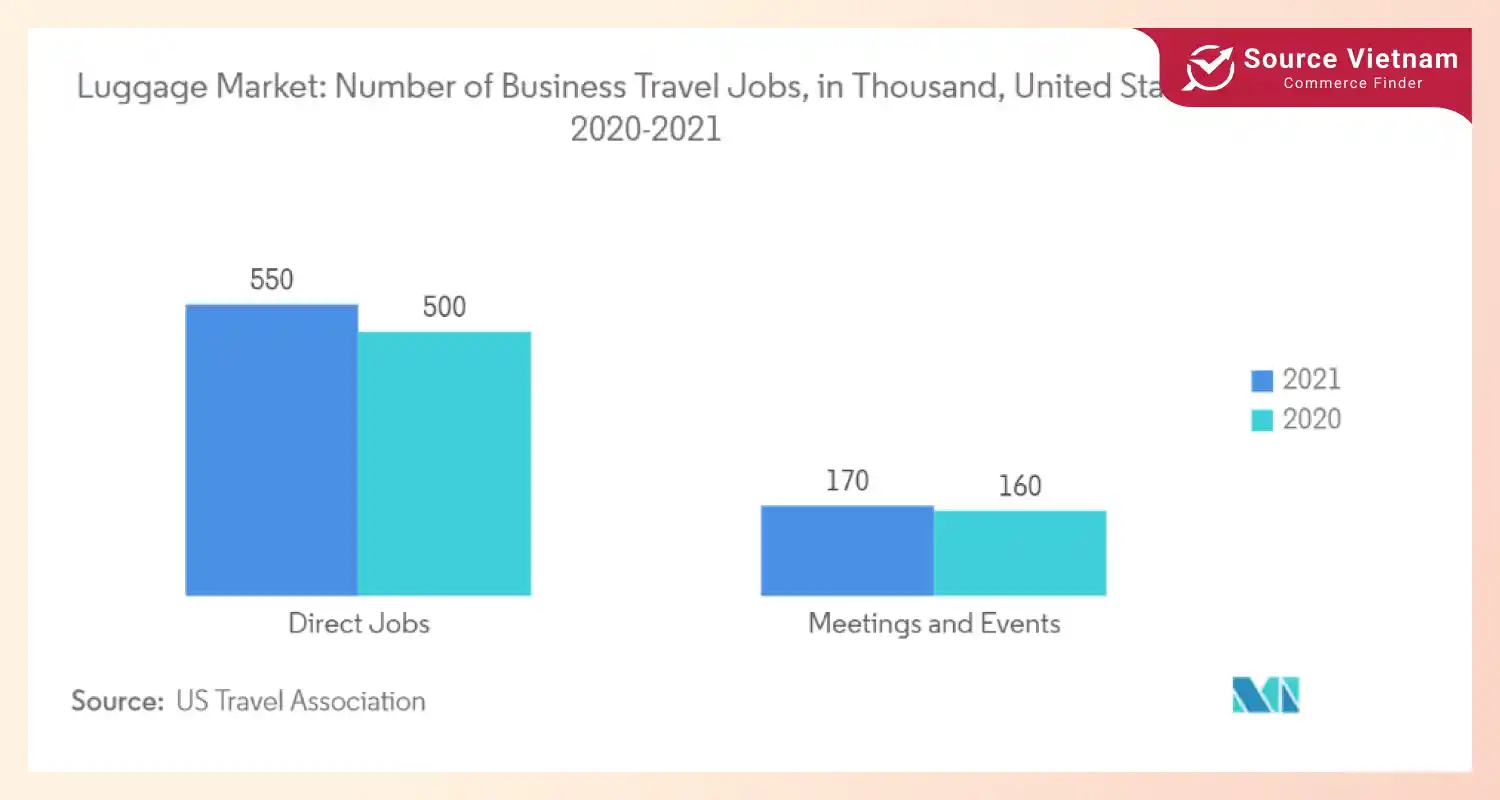
Smart luggage adoption
Technology integration into the design of luggage revolutionizes what travel means to the modern consumer.
- Innovative features: GPS tracking, USB charging ports, and automated locks are more or less trending in the modern making of luggage, offering better convenience and connection while exploring security.
- Expectations: Real-time tracking of luggage and portable charging are solutions travelers can’t afford not to have. They address common fears of lost luggage and life’s dead devices.
- Investment in R&D: Companies are working on solar-powered, AI theft-detection robotic luggage to stay ahead of changing needs.
- Ecosystem integration: Working with airlines and airports has opened up a whole new world for smart luggage, enabling such incredibly valuable functionality as compliance with weights and streamlined check-ins.
Read more >>>> How to choose the best backpacking backpacks for your outdoor adventure?
Eco-friendly and sustainable luggage
With the change in consumer preferences toward eco-friendly options, sustainability is increasingly becoming the pivot point of the luggage industry.
- Innovations in materials: As with all other segments of the market, luggage brands now prefer using recycled plastic, biodegradable fabric and other eco-materials.
- Change driven by consumers: Green-conscious travelers create the demand for green products, thus insisting that brands invest more in sustainable forms and optimize their carbon footprints.
- Brand initiatives: Additionally, brands are launching collections based on renewable materials and adapting circular economy tenets like take-back programs for ancient luggage.
Direct-to-consumer (D2C) Channels
Online platforms have changed the way luggage brands engage consumers as follows:
- Deeper customer engagement: By-passing retailers to interact with customers directly gives brands a shopping experience geared towards each individual and, therefore, forms stronger bonds.
- Pricing competition: D2C by direct companies eliminates middlemen in the D2C structure, allowing a better price without compromising on the high-quality standards.
- Digital convenience by virtual trials of product features together with AI recommendation engines and checkout facilitation redefine the whole consumer experience to make it more convenient and intimate.
Challenges in the luggage industry
There are several tremendous opportunities for growth within the luggage market later; that, however, does not come without marked challenges:
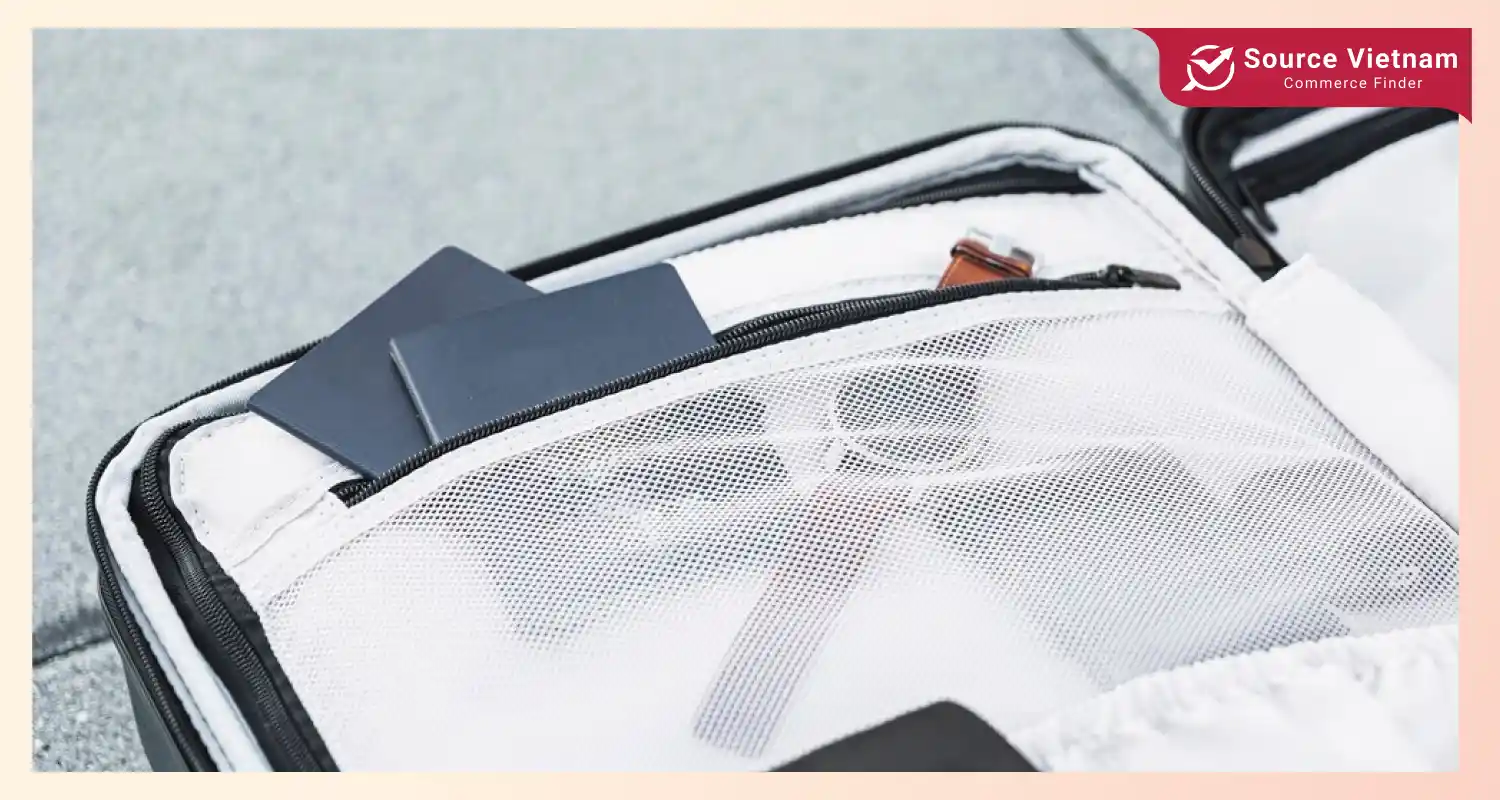
Raw material price volatilities
The luggage industry has been severely affected by volatile raw material prices.
- Cost impact: Fluctuating prices of core building materials such as aluminum, leather, plastics, etc., have a direct bearing on the overall production costs, in turn affecting profit margins.
- Supply chain dependency: Global disruptions in supply chains have aggravated these fluctuations, making it even tougher for manufacturers to ensure the stability of prices.
Disrupted supply chains
Global unpredictable events continually hinder the luggage market.
- Delay in production and service delivery: Globally occurring pandemics, political strife, and trade restriction influence supply chains and, as a result, affect manufacturing and distribution processes.
- Increasing costs: Cost increased due to shipping delays and raw materials shortages, both from manufacturers to consumers.
Consumer behavior changes
Changes in the economy greatly influence how one purchases goods such as luggage.
- Sensitivity to demand: Demand for travel bags moves with disposable income, with luxury and premium products being susceptible to downturns.
- Change in focus: Among other things, consumers are now looking for more adaptable, longer-lasting, and environmentally friendly travel luggage rather than those driven by trends after the pandemic.
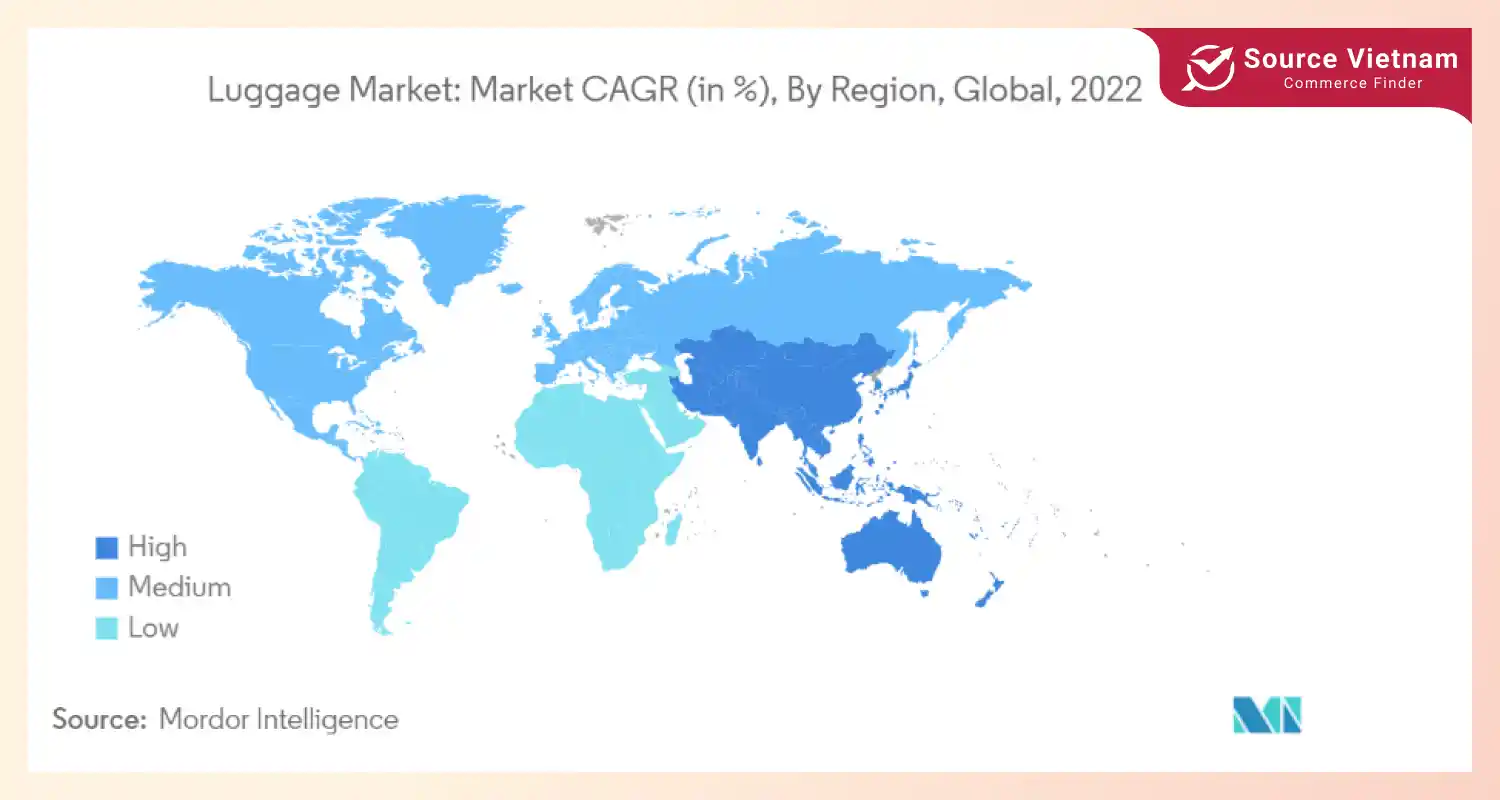
Future outlook: positive trends for growth (2024–2029)
Between 2024 and 2029, the luggage market is reputed to maintain a steady growth rate driven by the growing embrace of sustainable methods, holistic smart technologies, and increasing preferences for compact multifunctional luggage by millennials and Generation Z.
The growing middle class in Asia Pacific and Africa fields this improvised demand both for premium and budget-friendly products. Untapped opportunities for investors and businesses lie in such emerging markets as Southeast Asia and Africa, while digital transformation has been paving the way for new business models such as online-exclusive luggage lines and subscription-based travel.

Conclusion
The global luggage market is poised for substantial growth from 2024 to 2029, with opportunities across sustainability, innovation, and emerging markets.
For businesses and investors, staying ahead of these trends is crucial to capitalizing on this market’s potential.
Want to explore detailed insights or gain strategic updates? Visit SourceVietnam.com for more.

